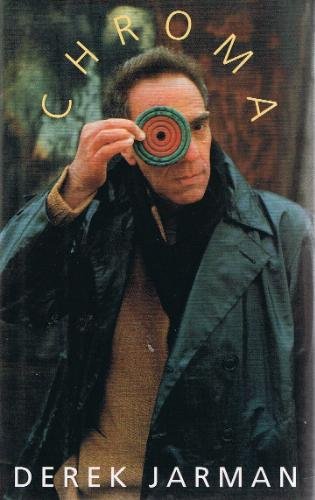Pierre Klossowski: Nietzsche and the Vicious Circle (1969–) [FR, ES, EN]
Filed under book | Tags: · affect, art, being, chaos, consciousness, culture, god, identity, intensity, language, meaning, perspective, philosophy, physiognomy, science

“Long recognized as a masterpiece of Nietzsche scholarship, Nietzsche and the Vicious Circle is made available here for the first time in English. Taking a structuralist approach to the relation between Nietzsche’s thought and his life, Pierre Klossowski emphasizes the centrality of the notion of Eternal Return (a cyclical notion of time and history) for understanding Nietzsche’s propensities for self-denial, self-refutation, and self-consumption.
Nietzsche’s ideas did not stem from personal pathology, according to Klossowski. Rather, Nietzsche made a pathological use of his best ideas, anchoring them in his own fluctuating bodily and mental conditions. Thus Nietzsche’s belief that questions of truth and morality are at base questions of power and fitness resonates dynamically and intellectually with his alternating lucidity and delirium.”
Publisher Mercure de France, Paris, 1969
Revised edition, 1978
367 pages
English edition
Translated by Daniel W. Smith
Publisher by University of Chicago Press, 1997
ISBN 0226443876, 9780226443874
282 pages
Publisher (EN)
Nietzsche et le cercle vicieux (French, 1969/1978, 5 MB, added on 2015-3-7)
Nietzsche y el circulo vicioso (Spanish, trans. Roxana Páez, 1995)
Nietzsche and the Vicious Circle (English, trans. Daniel W. Smith, 1997, 4 MB, updated on 2019-11-22)
See also Geoff Waite’s Nietzsche’s Corps/e (1996).
Comment (0)Pierre Klossowski: Living Currency (1970–) [FR, ES, EN]
Filed under book | Tags: · body, economy, life, philosophy, production, sadism, sexuality, value

“Essai littéraire et philosophique. Depuis le milieu du siècle dernier, des anathèmes ont été lancés au nom de la vie affective contre les ravages de la civilisation industrielle. Imputer aux moyens de production une action pernicieuse sur les affects, c’est, sous prétexte de dénoncer son emprise démoralisante, lui reconnaître une puissance morale considérable. D’où lui vient cette puissance ? ” Telle est la question qui traverse de part en part cet essai. L’auteur interroge d’autres écrivains en les citant, illustrant ainsi sa propre pensée. Sade, mais aussi Fourrier, Stendhal, Nietzsche s’expriment sur le processus même de l’émotion voluptueuse lorsque le corps est perçu comme monnaie vivante, objet de troc ou vecteur fantasmatique.”
“In Living Currency Klossowski draws a parallel between mass industrial production and sadism, between human bodies and currency. He analyzes the impact of industry and exchange on emotional life, and in so doing challenges several fundamental concepts of sexuality and value.”
Published in French as La Monnaie vivante, Editions Joëlle Losfield, Paris, 1970.
English edition
Translated by Jordan Levinson
Self-published, May 2012
32 pages
via translator
Commentary: Graham Joncas.
2008 Tate London exhibition inspired by the essay
La monnaie vivante (French, 1970, RTF)
La moneda viviente (Spanish, trans. Axel Gasquet, 1998)
Living Curency (English, trans. Jordan Levinson, 2012)
Derek Jarman: Chroma: A Book of Color (1995)
Filed under book | Tags: · alchemy, art, colour, film, light

“Chroma is a meditation on the color spectrum by the celebrated late artist and filmmaker Derek Jarman. From the explosions of image and color in In The Shadow of the Sun, The Last of England, The Garden and Wittgenstein, to the somber blacks of his collages and tar paintings, Jarman has consistently used color in unprecedented ways, making his ideas on the subject of interest to filmmakers, film audiences, artists and students alike. Blue, his most personal and innovative film, consists of a compelling soundtrack accompanied by a monochrome blue image and is, among other things, a comment on Jarman’s diminishing eyesight due to AIDS. In his signature style, a lyrical combination of classical theory, anecdote, and poetry, Jarman takes the reader through the spectrum, introducing each color as an embodiment of an emotion, evoking memories or dreams. He explains the use of color in Medieval painting through the Renaissance to the modernists and draws on the great color theorists from Pliny to Leonardo. He writes too about the meanings of color in literature, science, philosophy, psychology, religion and alchemy. Read either as a work on color, or a distillation of Jarman’s artistic vision, Chroma presents an exciting perspective on the subject.”
Publisher Overlook Press, Woodstock, New York, 1995
ISBN 0879515740, 978-0879515744
151 pages
PDF (English, updated on 2018-1-30)
PDF (Russian)

